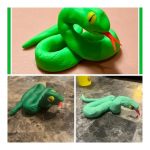Tiny Hands, Big Learning: Crafting Fine Motor Task Boxes for My Special Ed Superstars!
As a special education teacher, I’m constantly on the lookout for engaging, effective, and — let’s be honest — budget-friendly ways to help my students grow. This year, I’ve fallen in love with creating “task boxes,” especially those designed to boost fine motor skills while subtly weaving in other essential concepts like shape, color, and size identification. And let me tell you, these little wonders have been a game-changer for both me and my amazing students!
The beauty of these task boxes lies in their simplicity and versatility. My primary goal was to create something that would encourage those crucial pincer grasps and hand-eye coordination. But why stop there when you can layer in more learning?
Here’s my secret weapon: plastic shoebox bins. They’re inexpensive, readily available, and the perfect size for individual student tasks. The real magic happens with buttons – oh, the buttons! I collected a variety of shapes (circles, squares, stars, hearts), sizes (small, medium, large), and a rainbow of colors.
The creation process was a fun, late-night crafting session, made even better with my wonderfully supportive husband. He’s a pro with a box cutter, which was essential for carefully cutting holes in the shoebox lids to match each button’s unique shape. For the more intricate shapes and to refine the edges, I used precision scissors. Safety first, of course, when working with sharp tools!
Once the holes were perfectly cut, we used hot glue – my go-to for quick and strong bonds – to attach a matching button right next to each hole on the lid. So, if there’s a star-shaped hole, a star button is permanently glued next to it. The task for the student then becomes taking an identical, loose button and pushing it through the correct, corresponding hole.
Why I Love These Task Boxes:
- Fine Motor Powerhouse: This activity is a fantastic workout for those tiny hand muscles. Students have to manipulate the buttons, align them with the holes, and exert just the right amount of pressure to push them through.
- Multi-Sensory Learning: Beyond fine motor, students are constantly engaging with shape recognition (“This is a circle!”), color identification (“I need the red square!”), and even size discrimination (“This large button won’t fit in the small hole!”). It’s learning disguised as play.
- Student Engagement: My students genuinely love these boxes. They’re self-correcting, satisfying to complete, and provide a clear sense of accomplishment. I often see their faces light up when they successfully match a tricky shape!
- Teacher-Friendly & Cost-Effective: From a teacher’s perspective, these are a dream. Once made, they’re durable and can be used over and over again. The materials are incredibly cost-effective – a few shoebox bins and a bag of assorted buttons go a long way. Plus, they’re easy to store and pull out for individual work or station activities.
- Independence: These boxes promote independence, allowing students to work at their own pace and build confidence without constant one-on-one supervision.
It’s amazing how a few simple materials and a bit of creative energy can transform into such a valuable learning tool. My husband and I had a great time making them, and seeing the joy and progress in my students makes every hot glue burn (just kidding, mostly!) completely worth it.
Have you tried making task boxes in your classroom? I’d love to hear your ideas!





